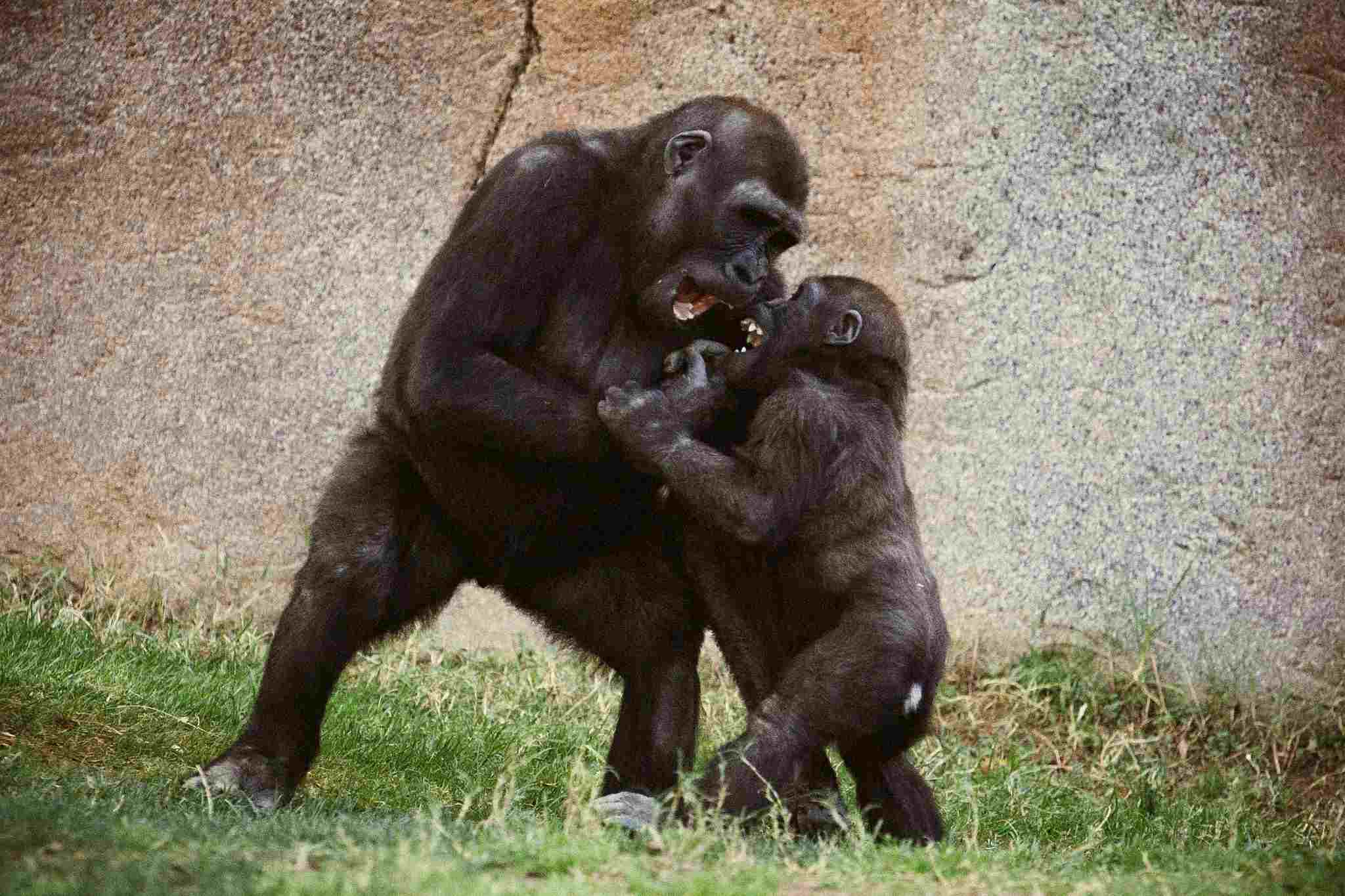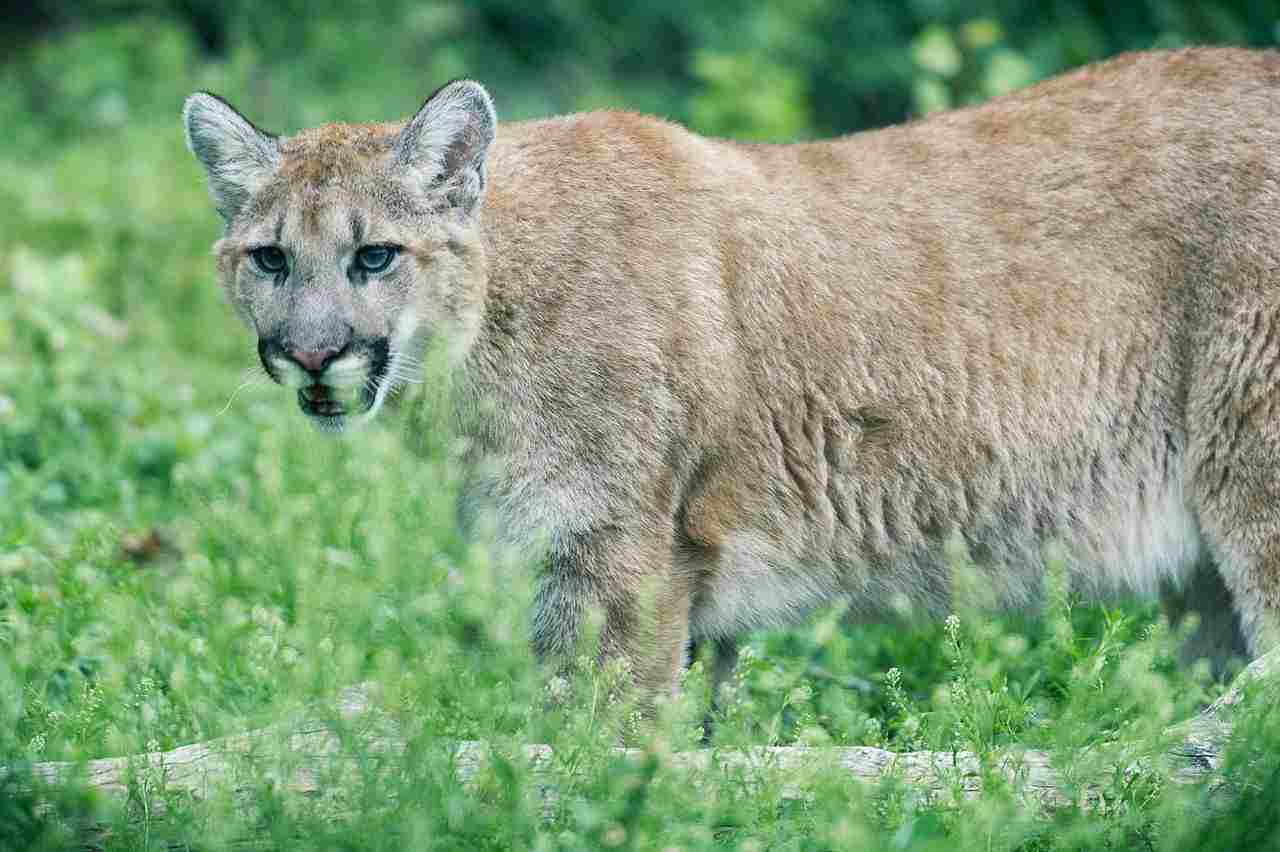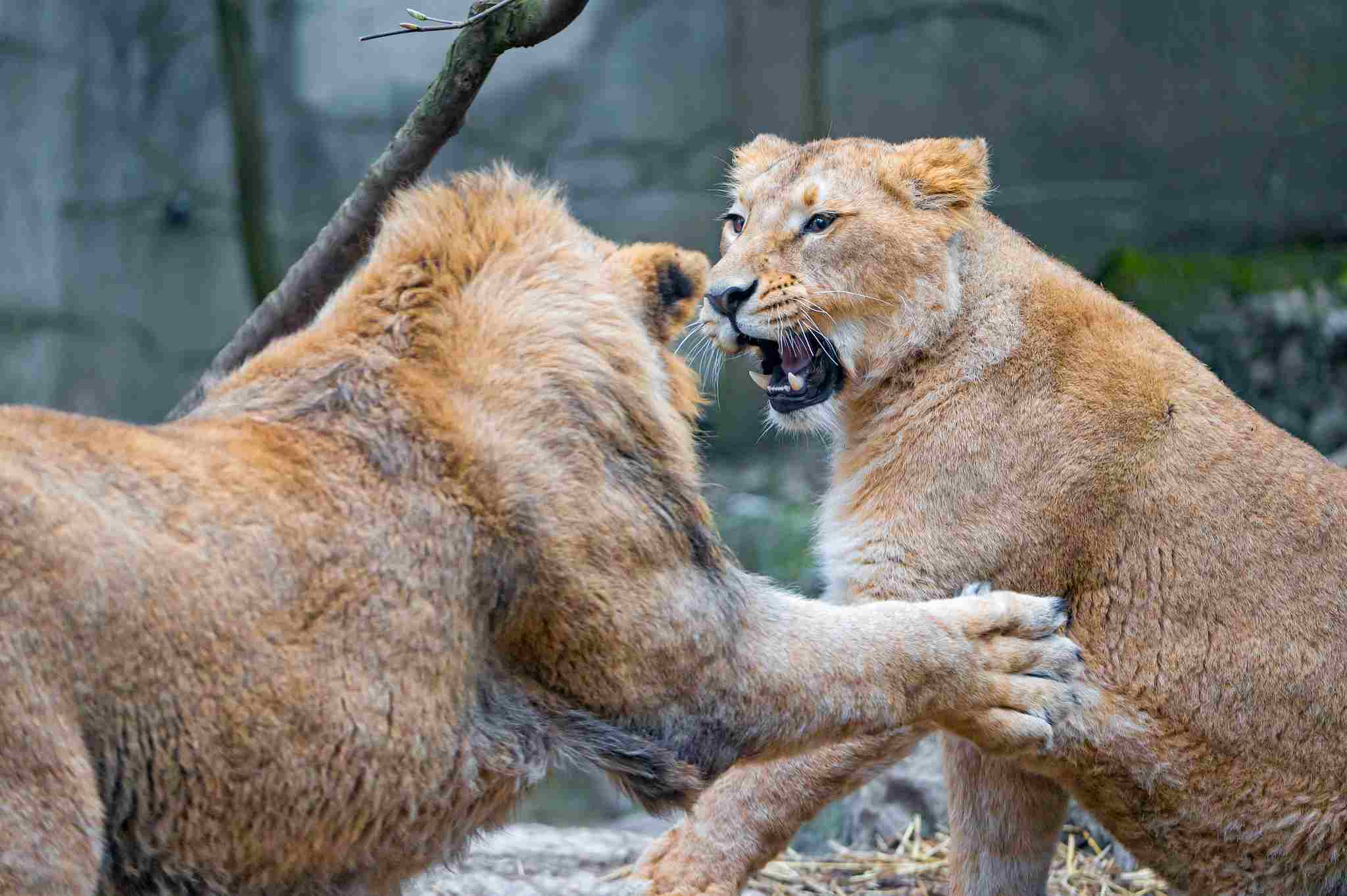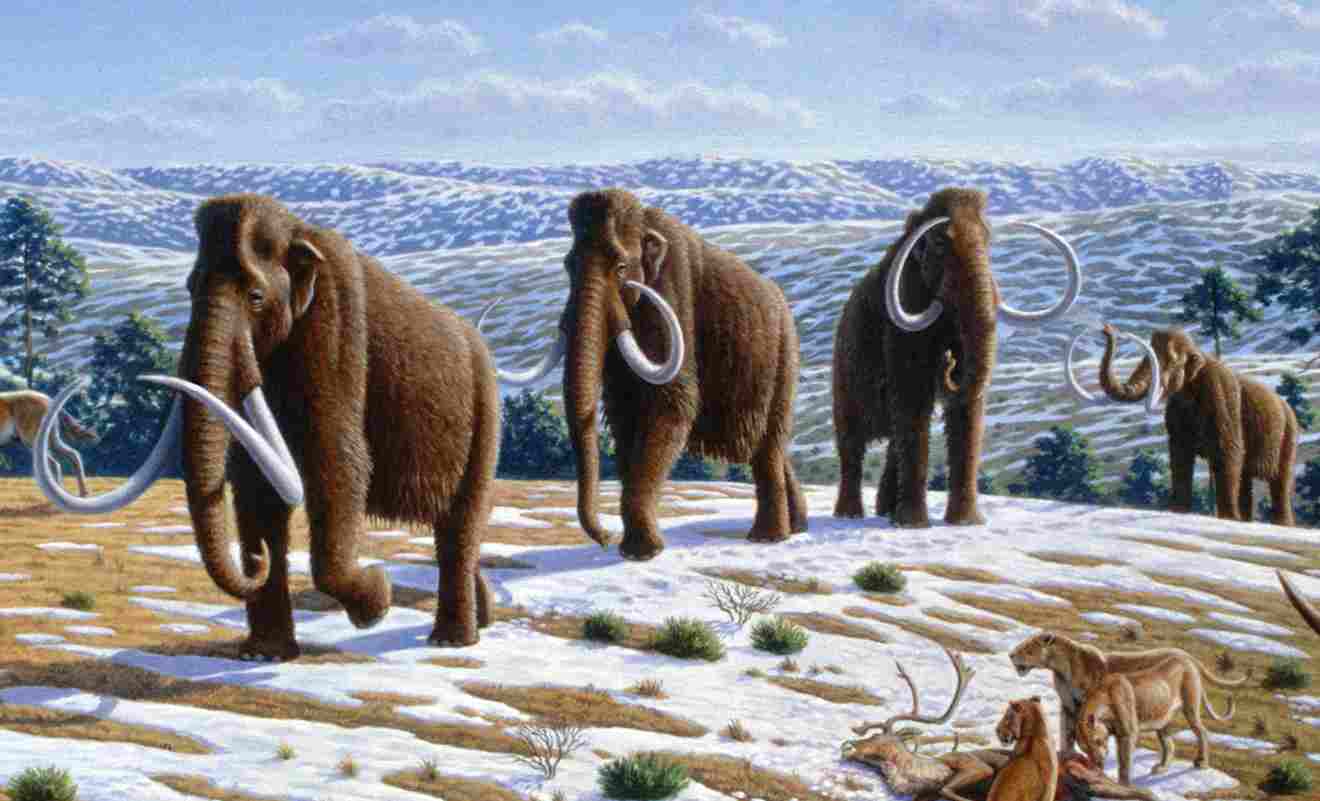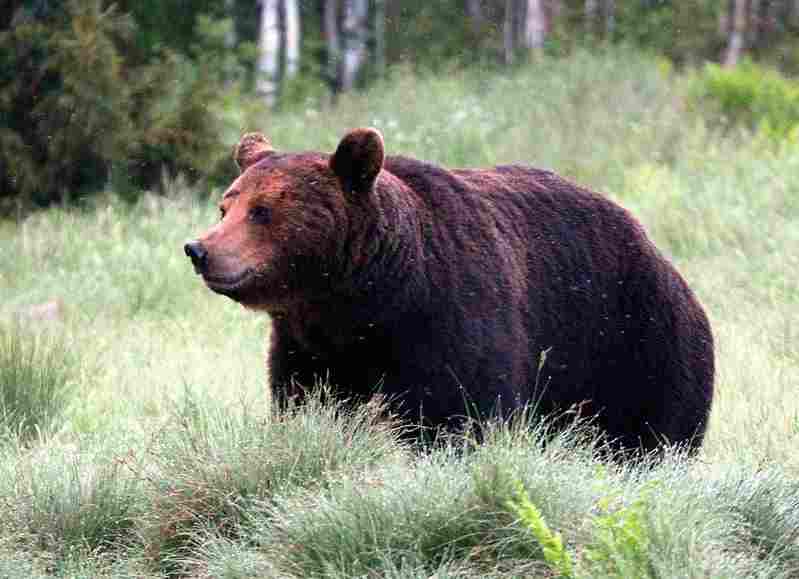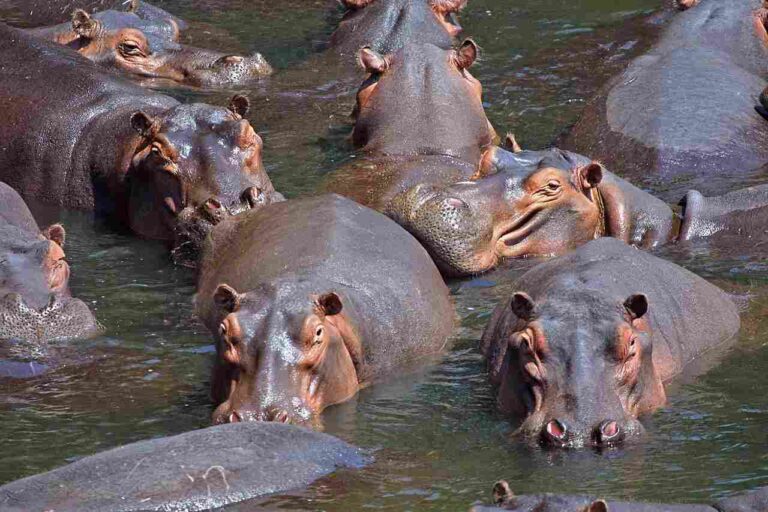Elephant Vs Lion Size, Weight, Ecological Comparison
On average, an elephant is several times stronger than a lion, as it is also much larger and heavier.
This article comparatively assesses the two animals, on the basis of various factors.
Key Outcomes
*Biological Comparison
The biological comparison between elephants and lions involves examining their genetic relationship and taxonomic classification. While elephants and lions are both mammals, they belong to different taxonomic families. Elephants are classified under the family Elephantidae, while lions are classified under the family Felidae.
Elephants are further divided into three species: the African bush elephant (Loxodonta africana), the African forest elephant (Loxodonta cyclotis), and the Asian elephant (Elephas maximus). On the other hand, lions are classified as Panthera leo, with several subspecies found across Africa and Asia.
Despite their different taxonomic classifications, both elephants and lions share certain biological characteristics. They are both large animals, with elephants being the largest land mammals and lions being the second-largest big cat species. Additionally, both animals have unique physical adaptations that allow them to thrive in their respective habitats.
*Size and Weight Comparison
When comparing the size and weight of elephants and lions, it is clear that elephants are larger and heavier than lions. Elephants are known for their massive size, with adult males reaching heights of up to 13 feet at the shoulder and weighing between 5,000 and 14,000 pounds. In contrast, lions are much smaller, with adult males averaging around 3.5 to 4 feet tall at the shoulder and weighing between 330 and 550 pounds.
The significant size difference between these two animals is due to their different evolutionary adaptations and ecological roles. Elephants have evolved to be the largest land mammals, while lions have adapted to be agile predators.
*Physical Capability Comparison
Elephants are indeed far stronger than lions, and this is primarily due to their superior size and weight. With their massive bodies, elephants possess immense physical power that allows them to perform impressive feats of strength. Lions, on the other hand, rely more on their agility and speed to hunt and survive.
While both animals have their own unique physical capabilities, the sheer size and strength of elephants give them a clear advantage in terms of raw power.
1). Taxonomy
Elephants belong to the genus “Elephas” and the species “Elephas maximus” for Asian elephants, and “Loxodonta africana” or “Loxodonta cyclotis” for African elephants. On the other hand, lions are classified under the genus “Panthera” and the species “Panthera leo.”
When comparing the taxonomy of these animals, it is evident that they belong to different genera and species, highlighting their distinct evolutionary paths. Elephants and lions have evolved separately, resulting in their unique characteristics and adaptations to their respective environments.
While elephants are known for their large size, long trunks, and distinctive tusks, lions are recognized for their muscular build, majestic manes, and powerful roars. These differences in appearance and physical attributes are a direct result of their divergent evolutionary paths.
2). Appearance
Elephants and lions have distinct appearances that reflect their evolutionary paths and adaptations to their environments. Starting with their coats, elephants have thick, wrinkled skin that is often gray in color. This unique skin texture helps to regulate their body temperature and protect them from the sun. In contrast, lions have short fur that varies in color, ranging from light tan to golden brown. This fur provides camouflage in their natural habitats, allowing them to blend in with the grasses and vegetation.
In terms of stature and build, elephants are known for their massive size and robust build. They have a stocky body with a large head and long, muscular legs. On the other hand, lions have a more streamlined and agile physique. They have a slender body with strong, well-developed muscles, particularly in their shoulders and hindquarters. This physical structure enables them to be swift and agile hunters.
When comparing the appearance of these animals, it is clear that elephants and lions have distinct features that are suited to their respective lifestyles. Elephants’ thick skin and large size provide protection and dominance, while lions’ camouflaged fur and agile build make them efficient predators.
3). Size
When comparing the size of elephants and lions, it is evident that these animals differ significantly in their dimensions. Elephants are known for their immense size, with adult males reaching heights of up to 13 feet at the shoulders and measuring around 20 to 25 feet in total body length. In contrast, lions are relatively smaller, with males typically standing at around 3.5 to 4 feet at the shoulders and measuring approximately 8 to 10 feet in total body length.
The size difference between these two animals is primarily due to their distinct evolutionary paths and ecological roles. Elephants, as herbivores, require a larger body size to accommodate their specialized digestive system and to support their massive frame. Their size also serves as a deterrent against potential predators.
On the other hand, lions, as carnivores, have a more compact and agile build that allows them to pursue and capture their prey efficiently. While they may not possess the same physical stature as elephants, their size is well-suited for their hunting strategies and enables them to navigate through their natural habitats with ease.
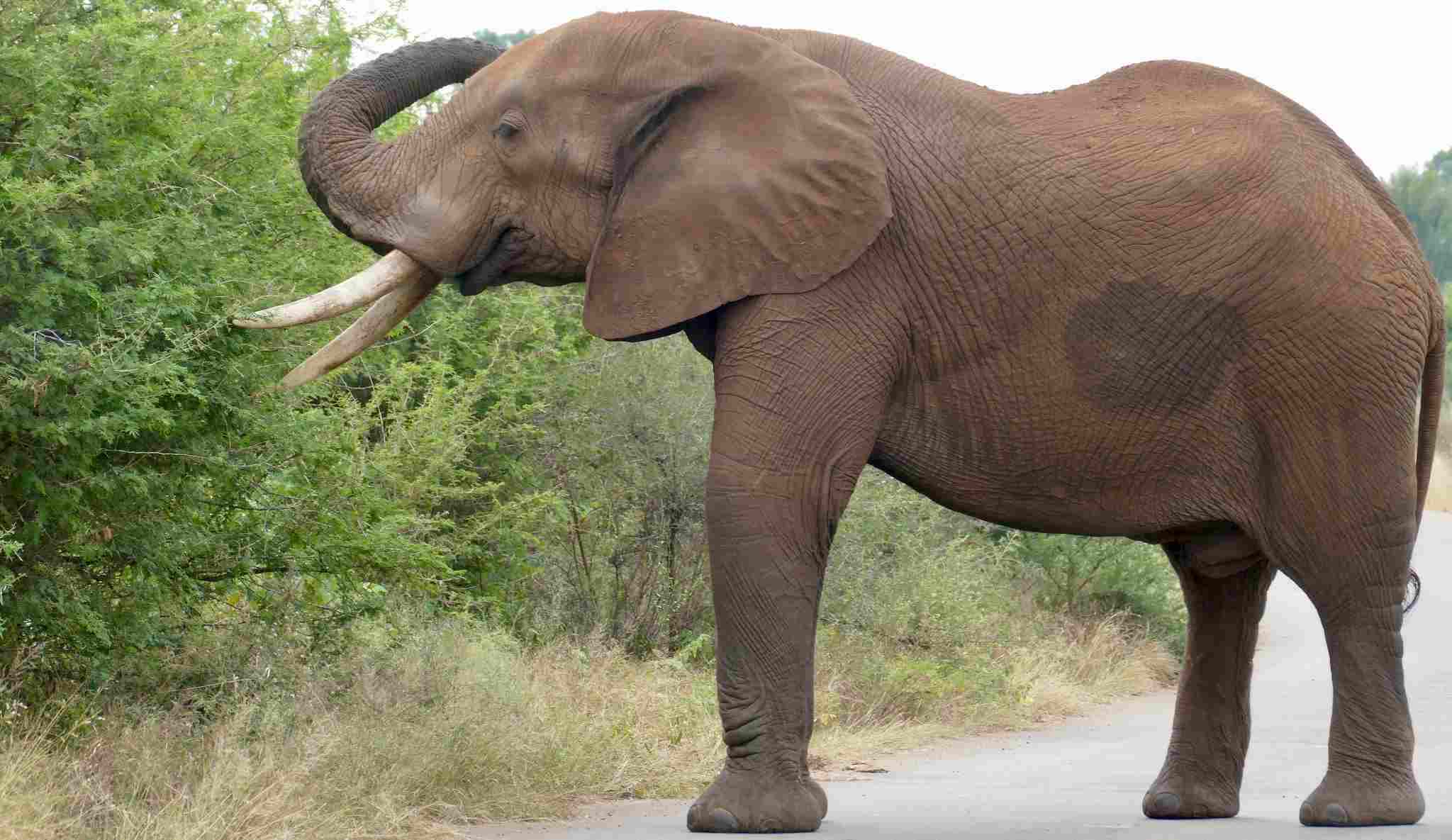
4). Weight
Elephants are known for their immense size and weight, with adult males weighing between 5,000 and 14,000 kilograms (11,000 to 31,000 pounds). In contrast, lions are relatively lighter, with males typically weighing between 150 and 250 kilograms (330 to 550 pounds).
The weight disparity between these two animals is a result of their distinct ecological roles and dietary requirements. Elephants, being herbivores, need to consume large quantities of vegetation to meet their nutritional needs. Their massive weight allows them to exert the necessary force to access and consume the vast amounts of food required to sustain their bodies.
On the other hand, lions, as carnivores, have a more streamlined body structure that is adapted for hunting and capturing prey. Their lighter weight enables them to move swiftly and stealthily, making them efficient predators in their natural habitats.
5). Bite Force
Elephants possess an incredibly powerful bite force, with their jaws exerting a pressure of up to 2,100 pounds per square inch (psi). This immense force allows them to crush and consume tough vegetation, such as tree bark and branches. It also enables them to defend themselves against potential threats in their environment.
In contrast, lions have a bite force of around 650 psi, making them one of the strongest biters among land animals. This force is essential for lions to subdue and kill their prey, which often includes large herbivores like zebras and wildebeests. The lion’s bite force is concentrated in its sharp canine teeth, which can easily puncture through the thick hides of their prey.
The difference in bite force between elephants and lions is significant. While elephants use their powerful jaws to break down vegetation, lions rely on their bite force to immobilize and kill their prey. This divergence in bite force reflects the distinct ecological roles and dietary requirements of these two animals. Elephants need to consume large quantities of tough vegetation, while lions need to be able to overpower and subdue their prey. Both animals have evolved bite forces that are perfectly suited to their respective lifestyles and survival strategies.
6). Overall Physical Capacity (Which is Stronger?)
In terms of sheer size and weight, elephants clearly have the advantage. They are the largest land animals, with males weighing up to 12,000 pounds and standing over 10 feet tall at the shoulder. Lions, on the other hand, are smaller in comparison, with males weighing around 420 pounds and standing about 4 feet tall at the shoulder.
However, size alone does not determine strength in a violent confrontation between these two animals. Lions are highly skilled predators with exceptional agility and speed. They possess powerful muscles and sharp claws that enable them to take down large prey. Elephants, on the other hand, have immense strength and can use their size to their advantage, but they are not as agile or quick as lions.
In a direct confrontation between an elephant and a lion, it is difficult to determine which animal would come out as the stronger one. It would depend on various factors such as the element of surprise, the specific circumstances of the encounter, and the strategies employed by each animal.
7). Habitat
The habitat of elephants and lions plays a crucial role in shaping their behavior and survival strategies. Elephants are primarily found in diverse ecosystems such as savannas, grasslands, and forests across Africa and Asia. They have a wide geographic range, occupying various countries and regions within these continents. This adaptability allows them to thrive in different environments and utilize a variety of food sources.
On the other hand, lions are predominantly found in grassland habitats, particularly in sub-Saharan Africa. They are well-adapted to the open plains, where they can utilize their speed and agility to hunt their prey effectively. Lions are also known to inhabit scrubland and woodland areas, but they are less common in dense forests or desert regions.
When comparing the habitats of elephants and lions, it is evident that elephants have a broader range and can adapt to a wider variety of ecosystems. This adaptability is partly due to their herbivorous diet, which allows them to find food in different environments. Lions, on the other hand, are more specialized in their habitat requirements, preferring open grasslands where they can hunt effectively.
8). Lifespan
Elephants have an average lifespan of around 60 to 70 years in the wild, although some individuals have been known to live up to 80 years or more. This long lifespan can be attributed to their large size, slow rate of reproduction, and relatively low predation risk. Elephants also benefit from living in social groups, where they receive protection and support from other members of their herd.
On the other hand, lions have a shorter lifespan compared to elephants. In the wild, lions typically live for around 10 to 14 years. This relatively shorter lifespan can be attributed to various factors, including high predation risk, competition for resources, and the physical demands of hunting. Male lions, in particular, often have a shorter lifespan due to the challenges they face in defending their territory and pride.
9). Behavior
In terms of feeding, elephants are herbivores, primarily consuming grass, leaves, bark, and fruits. Their large size and long trunk allow them to reach high branches and dig for water and roots. On the other hand, lions are carnivores, relying on hunting for their sustenance. They are skilled predators, often hunting in coordinated groups to bring down large prey.
Aggression is another aspect of behavior where the two species differ. While elephants are generally peaceful and non-aggressive, they can become territorial and protective of their young. Lions, on the other hand, are known for their aggressive nature, especially during territorial disputes and when defending their pride.
Vocalization is an important means of communication for both elephants and lions. Elephants produce a wide range of vocalizations, including trumpeting, rumbling, and roaring, which serve to communicate with other members of their herd. Lions, on the other hand, are known for their distinctive roar, which can be heard over long distances and serves to communicate with other members of their pride.
Social behavior also differs between the two species. Elephants live in tight-knit family groups led by a matriarch, with strong social bonds and cooperative behavior. Lions, on the other hand, live in prides consisting of multiple females, their offspring, and a few dominant males. The social structure of lions is based on a hierarchical system, with the dominant male leading the pride.
In terms of parenting, both elephants and lions exhibit strong parental care. Female elephants play a crucial role in raising and protecting their young, while male lions are responsible for defending the pride and ensuring the survival of their offspring.
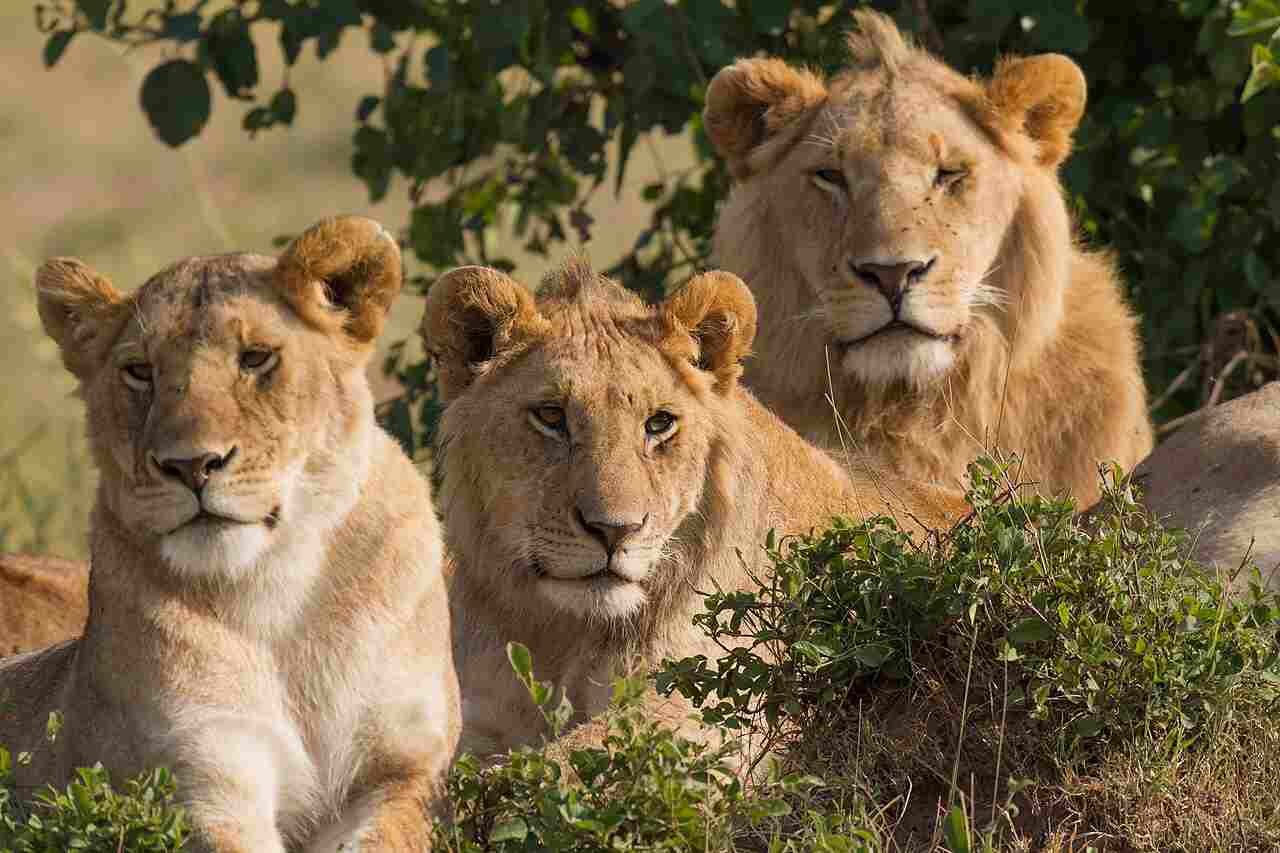
10). Reproduction
Elephants and lions have distinct reproductive strategies. Elephants are viviparous, meaning they give birth to live young. The gestation period for elephants is the longest among land mammals, lasting approximately 22 months. This extended period allows for the development of a highly intelligent and social offspring.
On the other hand, lions are viviparous, meaning they lay eggs. The gestation period for lions is significantly shorter, lasting around 110 days. Lion cubs are born blind and rely on their mother for protection and nourishment during their early stages of life.
When comparing the reproductive strategies of these two species, it is clear that elephants invest more time and energy into the development and care of their young. This is reflected in their longer gestation period and the strong social bonds within elephant herds.
In contrast, lions have a shorter gestation period and rely on the protection and guidance of their mother within the pride. Lion cubs learn essential hunting and survival skills from their mother and other pride members.
11). Danger Posed to Humans
Generally, lions are more dangerous and aggressive than elephants.
Elephants and lions both have the potential to pose dangers to humans, but their behaviors and interactions differ. Elephants are generally peaceful animals, but they can become aggressive if they feel threatened or if their young are in danger. However, the rate of human deaths caused by elephants is relatively low compared to other animals.
On the other hand, lions are not typically found near human settlements and tend to avoid areas with a high human population. However, in rare cases, when lions feel cornered or their territory is invaded, they may exhibit aggressive behavior towards humans. The rate of human deaths caused by lions is higher compared to elephants.
If you encounter an elephant or a lion in the wild, it is crucial to exercise caution and follow certain precautions. For elephants, it is recommended to maintain a safe distance and avoid any sudden movements or loud noises that may startle them. In the case of lions, it is best to avoid direct eye contact, make yourself appear larger, and slowly back away without turning your back on them.
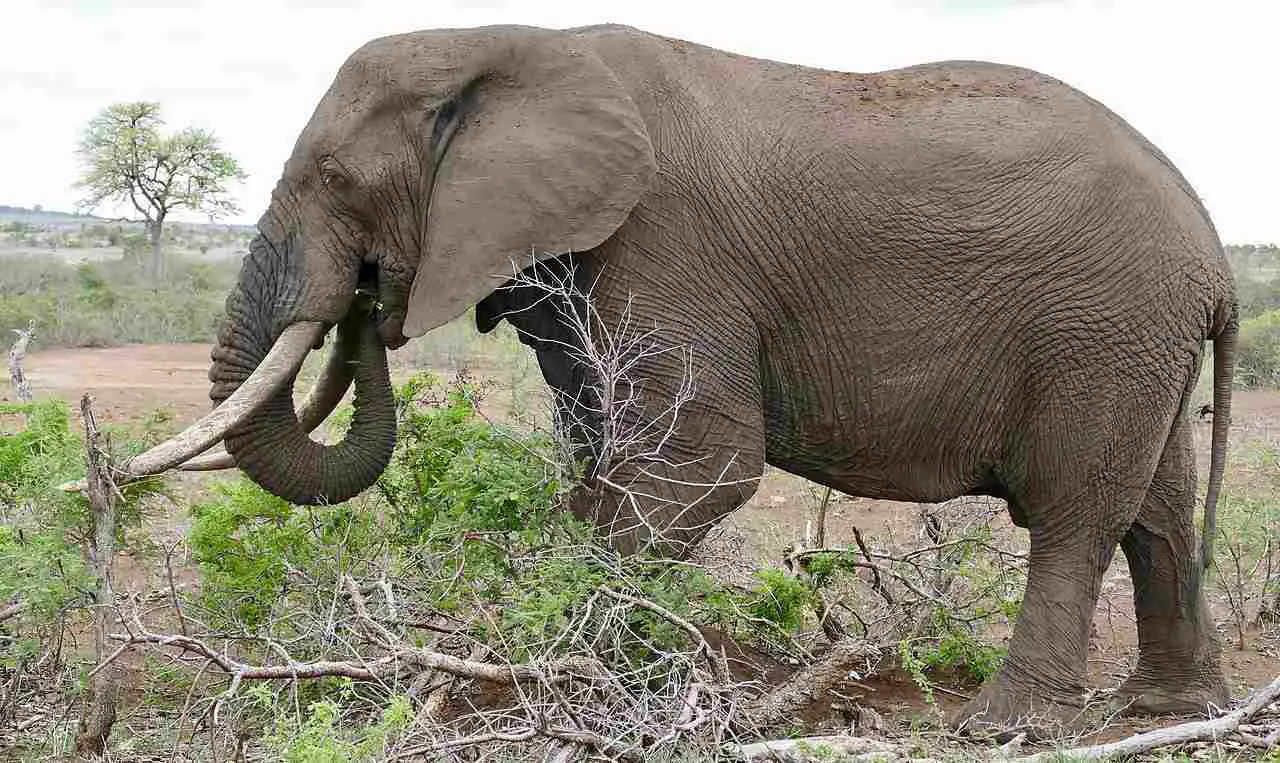
12). Conservation Status
The conservation status of elephants and lions varies, with elephants being classified as endangered or threatened, while lions are listed as vulnerable. Both species face significant threats to their survival in the wild.
For elephants, the main threats to their populations include habitat loss and fragmentation, poaching for ivory, and human-wildlife conflict. The destruction of their natural habitats due to human activities such as deforestation and urbanization has resulted in a significant decline in elephant populations.
Additionally, the illegal ivory trade continues to drive poaching, further endangering these majestic creatures. Efforts are being made to protect and conserve elephant populations through initiatives such as anti-poaching patrols, habitat conservation, and community-based conservation programs.
Lions, on the other hand, face threats such as habitat loss, human-wildlife conflict, and trophy hunting. The conversion of lion habitats into agricultural land and the encroachment of human settlements have led to a decline in lion populations. Human-wildlife conflict arises when lions come into conflict with livestock farmers, leading to retaliatory killings. Trophy hunting, although regulated in some areas, still poses a threat to lion populations. Conservation efforts for lions focus on habitat protection, community engagement, and stricter regulations on trophy hunting.
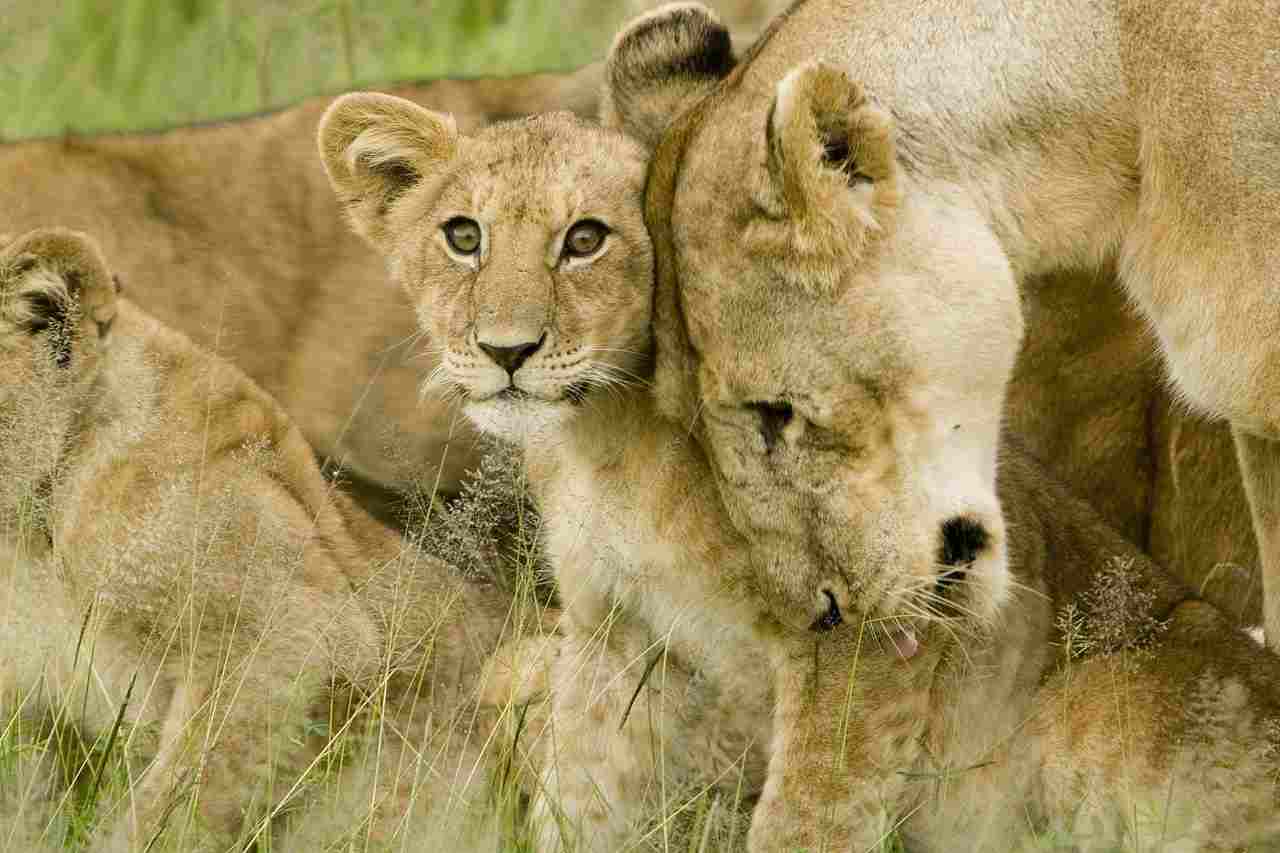
Conclusion
I). SIMILARITIES
In conclusion, despite their differences, elephants and lions share some remarkable similarities. Both animals are iconic symbols of the African savannah and play crucial roles in their respective ecosystems. They are both highly social creatures, living in complex family structures. Elephants form tight-knit herds led by a matriarch, while lions live in prides consisting of multiple females, their offspring, and a few dominant males. These social structures provide support, protection, and opportunities for learning within their groups.
Furthermore, both elephants and lions are top predators in their habitats, exerting significant influence on the balance of their ecosystems. They are apex predators, playing vital roles in regulating prey populations and maintaining the overall health of their ecosystems.
II). DIFFERENCES
Despite their similarities, elephants and lions also have distinct differences. Elephants are herbivores, relying on a diet of vegetation, while lions are carnivores, primarily hunting and feeding on other animals. This fundamental difference in diet shapes their physical characteristics and behaviors.
Additionally, elephants are known for their incredible size and strength, while lions are renowned for their agility and speed. These adaptations reflect their different ecological roles and hunting strategies.

